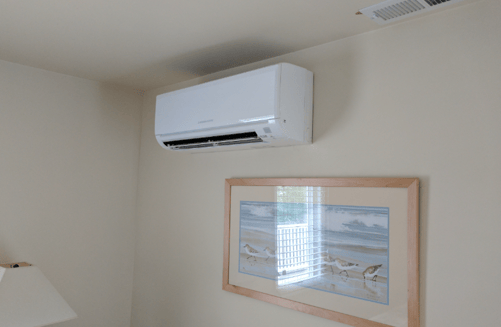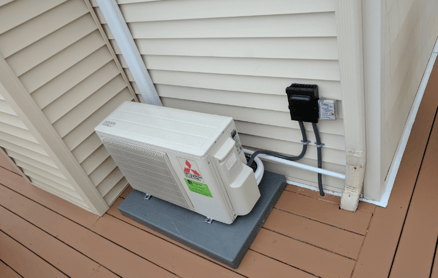Problem: An older ductless unit with an outdoor component was badly corroded and wasn’t able to keep the area cool enough anymore.
Solution: Install Mitsubishi ductless cooling and heating units inside the home.
Problem: An older ductless unit with an outdoor component was badly corroded and wasn’t able to keep the area cool enough anymore.
Solution: Install Mitsubishi ductless cooling and heating units inside the home.
Living near the ocean means a lot of things: the relaxing sound of waves crashing, the cool breezes, the ... corroded air conditioning units?
Yes, it’s not all boogie boards and beach bums when you live at the shore. All that salt water in the air is no good for metal, or machines in general. While any kind of water causes oxidation, salt water is an especially good conductor of dissociated ions, which accelerates the corrosion process.
But this isn’t a science class. Long story short is: sea water makes stuff rust faster than fresh water. And, for a home in the Riveria section of Ocean City, New Jersey, that meant an A/C unit wasn’t able to do the job anymore.
Problem: An older ductless unit with an outdoor component was badly corroded and wasn’t able to keep the area cool enough anymore.
Solution: Install Mitsubishi ductless cooling and heating units inside the home.

Ductless panels have some advantages over window and wall units, and even central heating and air systems. For starters, they’re not nearly as loud or obtrusive as a clunky old machine sitting in your window. You also don’t need to carve out a huge section of your wall for one.
And, unlike centralized systems, they don’t take up a lot of space all throughout the house with ductwork. That’s especially important in shore homes, especially rentals like this one, that often aren’t very big in the first place.
That’s probably what attracted the owner to a ductless system. Here, the panels mount anywhere on the wall and push air through tiny, flexible tubes.
This means you can put them just about anywhere without worrying about how to fit the ducts. It only takes a tiny hole around one inch in diameter. From there, you can move the flexible tubing that pushes the air wherever you need it to go.

But, some older systems still used an outdoor component to make it work. And in this case, that’s where their problem came in. All that salt air wreaked havoc on the outdoor unit, causing it to break down sooner than it should have.
Fortunately, today’s Mitsubishi ductless units don’t have that problem. All you need are the panels inside the home. In this case, our tech just put a few sleek, unobtrusive panels on the walls in a few rooms near the ceilings. Now, the whole house stays cool, and the owner even got some quick cash for his efforts. Since the units are energy efficient, they met standards for the Cool Advantage program through New Jersey’s Clean energy project.
Part of energy efficiency, along with being good for the environment, means the unit costs less money to do the job of older units. That means this owner pays less money each month on his energy bills. For a rental property like this, that translates into less overhead and more profit. And, he received a $500 cash rebate for installing the new system.
Imagine that — making money by saving money!